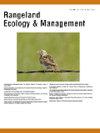我们该何去何从?长期展望?
IF 2.4
3区 环境科学与生态学
Q2 ECOLOGY
引用次数: 0
摘要
在我们供职于州立野生生物机构并参与西部鱼类和野生生物机构协会的工作期间,我们见证并参与了州立和联邦机构对鼠尾草(蒿属)的看法和行动的演变。这种从清除鼠尾草以鼓励饲料生产到保护和恢复的转变有多种原因,但最大的因素是大鼠尾草(Centrocercus urophasianus)数量的长期下降以及可能被列入《濒危物种法》。上市的可能性加速了土地管理局、美国林务局、鱼类和野生动物管理局、各州、非政府组织和私人土地所有者的规划和实施活动,这些活动一直持续到今天。我们在合作科学方面的巨大投入为我们成功保护灌木丛和灌木丛必生物种奠定了基础。我们围绕五个主题发表了自己的见解,并提出了推进灌丛保护的具体建议。尽管三十多年来我们做出了前所未有的保护努力,但我们仍在以每年 53 万公顷(130 万英亩)的速度失去灌木丛,这意味着我们必须提高我们保护灌木丛的能力,并在投资方面更具战略性。将保护重点从鼠尾草转移到灌木丛将减少冲突、提高参与度并扩大收益。要提高从生物群落到地方范围的财力和人力,就必须有效地宣传鼠尾草生物群落的价值和面临的威胁。包括本期在内的最新科学产品为我们提供了一种新的能力,同时也为我们创造了一种责任,那就是将用于鼠尾草的资金战略性地用于我们能够取得成功的地方。这种战略方法应该是适应性的,具有明确的保护目标,并通过监测来评估进展情况。这将需要前所未有的合作,以确定优先领域和目标,这将需要一个合作治理结构来协调。为此,我们提出了 9 项具体实施建议。本文章由计算机程序翻译,如有差异,请以英文原文为准。
Where Do We Go From Here With Sagebrush Conservation: A Long-Term Perspective?
During our careers with State Wildlife Agencies and involvement with the Western Association of Fish and Wildlife Agencies, we have watched and participated as state and federal agency perspectives about, and actions toward sagebrush (Artemisia spp.) have evolved. This change from sagebrush removal efforts to encourage forage production to conservation and restoration had several causes, but the largest factor was the long-term decline in greater sage-grouse (Centrocercus urophasianus) populations and potential for listing under the Endangered Species Act. Potential for listing accelerated planning and implementation activity by the Bureau of Land Management, US Forest Service, Fish and Wildlife Service, states, nongovernmental organizations, and private landowners that continues to this day. The tremendous investment we have all made in collaborative science has set us up for success in conserving sagebrush and sagebrush obligate species. We offer insights organized around five themes and specific recommendations for moving sagebrush conservation forward. Despite over three decades of unprecedented conservation efforts, we are still losing sagebrush at a rate of 0.53 million hectares (1.3 million acres) per year, which means we must both increase our capacity for sagebrush conservation and become more strategic in our investments. Shifting the emphasis of conservation from sage-grouse to sagebrush will reduce conflicts, increase participation, and broaden benefits. Increasing capacity, both fiscal and human from biome to local scales will require effectively communicating the value of, and threats to, the sagebrush biome. Recent science products, including this issue, offer a new ability and create a responsibility to strategically target sagebrush dollars where we can be successful. This strategic approach should be adaptive, with explicit conservation goals and monitoring to evaluate progress. This will require unprecedented collaboration to establish priority areas and goals, which will necessitate a collaborative governance structure to coordinate. Toward this end, we offer 9 specific implementation recommendations.
求助全文
通过发布文献求助,成功后即可免费获取论文全文。
去求助
来源期刊

Rangeland Ecology & Management
农林科学-环境科学
CiteScore
4.60
自引率
13.00%
发文量
87
审稿时长
12-24 weeks
期刊介绍:
Rangeland Ecology & Management publishes all topics-including ecology, management, socioeconomic and policy-pertaining to global rangelands. The journal''s mission is to inform academics, ecosystem managers and policy makers of science-based information to promote sound rangeland stewardship. Author submissions are published in five manuscript categories: original research papers, high-profile forum topics, concept syntheses, as well as research and technical notes.
Rangelands represent approximately 50% of the Earth''s land area and provision multiple ecosystem services for large human populations. This expansive and diverse land area functions as coupled human-ecological systems. Knowledge of both social and biophysical system components and their interactions represent the foundation for informed rangeland stewardship. Rangeland Ecology & Management uniquely integrates information from multiple system components to address current and pending challenges confronting global rangelands.
 求助内容:
求助内容: 应助结果提醒方式:
应助结果提醒方式:


